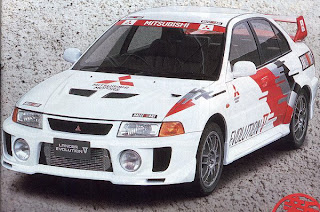Friday, September 30, 2011
Saturday, September 10, 2011
Mercedes-Benz-Blog TRIVIA: A history with pulling power - Mercedes-Benz all-wheel-drive vehicles

The history of four-wheel-drive vehicles at Mercedes-Benz dates back to the early years of the 20th century, when Paul Daimler traced the sketches of a 4x4 automobile in 1903. The car was then introduced into production four years later, in 1907, it was known as the "Dernburg-Wagen" and featured an all-wheel steering system.
However, it was still based mostly on previously-designed series models, specifically on army trucks equipped with an identical steering system that were assembled by Daimler-Motoren Gesellschaft between 1905 and 1906. Another prominent achievement of that period was the cooperation with Krupp AG, which led to the production of the KD1 artilery tractor from 1917. By mid-1920s, the newly-formed Daimler-Benz AG was releasing the versatile MTw 1 vehicle, which could go both backwards and forwards thanks to ingenious technical solutions for the transmission and steering system. Approaching the 1930s and then the period of the Second World War, the G 4 and G 5 models saw the light of day to be used primarily as means of transport in battlefield areas by the German Ministry of Defence. After 1945, Mercedes-Benz concentrated on developing useful all-wheel traction systems for medium-sized and heavy-duty trucks, but also mastered a one-of-a-kind machine: the Unimog. During the end of the '60s and in the '70s, the ingenious range of various MBtrac agricultural tractors was unleashed and then, by 1979, the iconic G-Class 4WD vehicle was born. At the 1985 edition of the IAA, Mercedes-Benz revealed the new 4MATIC system, superior in every aspect to all the previous technologies used by the German constructor, which was to reach on the W 124 series E-Class in 1987 as an optional equipment. Nowadays, almost any model in the Mercedes-Benz lineup, whether it is a passenger, a truck or a van, can be ordered with a 4x4 chassis. And the technical progress can never be stopped, as engineers from Stuttgart are constantly refining and enriching the 4MATIC solution to make it even more safe, efficient and fun to drive.
Read the complete history of the all-wheel-drive vehicles produced by Mercedes-Benz >> HERE
Copyright © 2011, Mercedes-Benz-Blog. All rights reserved.
Italian F1 Grand Prix 2011: Further Friday Photos (VMM)

The ferociously-fast Monza track has always been a gamble for finding the best balance between drag and downforce to ensure a smooth, unbeatable result. During the first day on the Italian circuit, all the F1 teams involved in the 2011 season awarded much of the set-up time to installing and understanding certain packages designed to get the most out of the single-seaters. VODAFONE MCLAREN MERCEDES engineers and drivers have also been very busy during whole Friday and got an accurate reading of the performance the two MP4-26 cars can achieve. Lewis Hamilton was particularly content with the wing settings prepped for the free practice sessions, which paved the way to the strong results he brought for his team: P1 after FP1 and P2 after FP2. Jenson Button was slightly slower than his colleague and reported some errors that need to be fixed in order to have a strong, close to ideal aerodynamic package, which also must be evenly mated with a fully functional DRS in order to ensure competitive values for the drag and downforce levels.
Check out more photos captured yesterday at Monza after the break!






































* Official photos courtesy of VODAFONE MCLAREN MERCEDES *
Copyright © 2011, Mercedes-Benz-Blog. All rights reserved.
Subscribe to:
Posts (Atom)


































